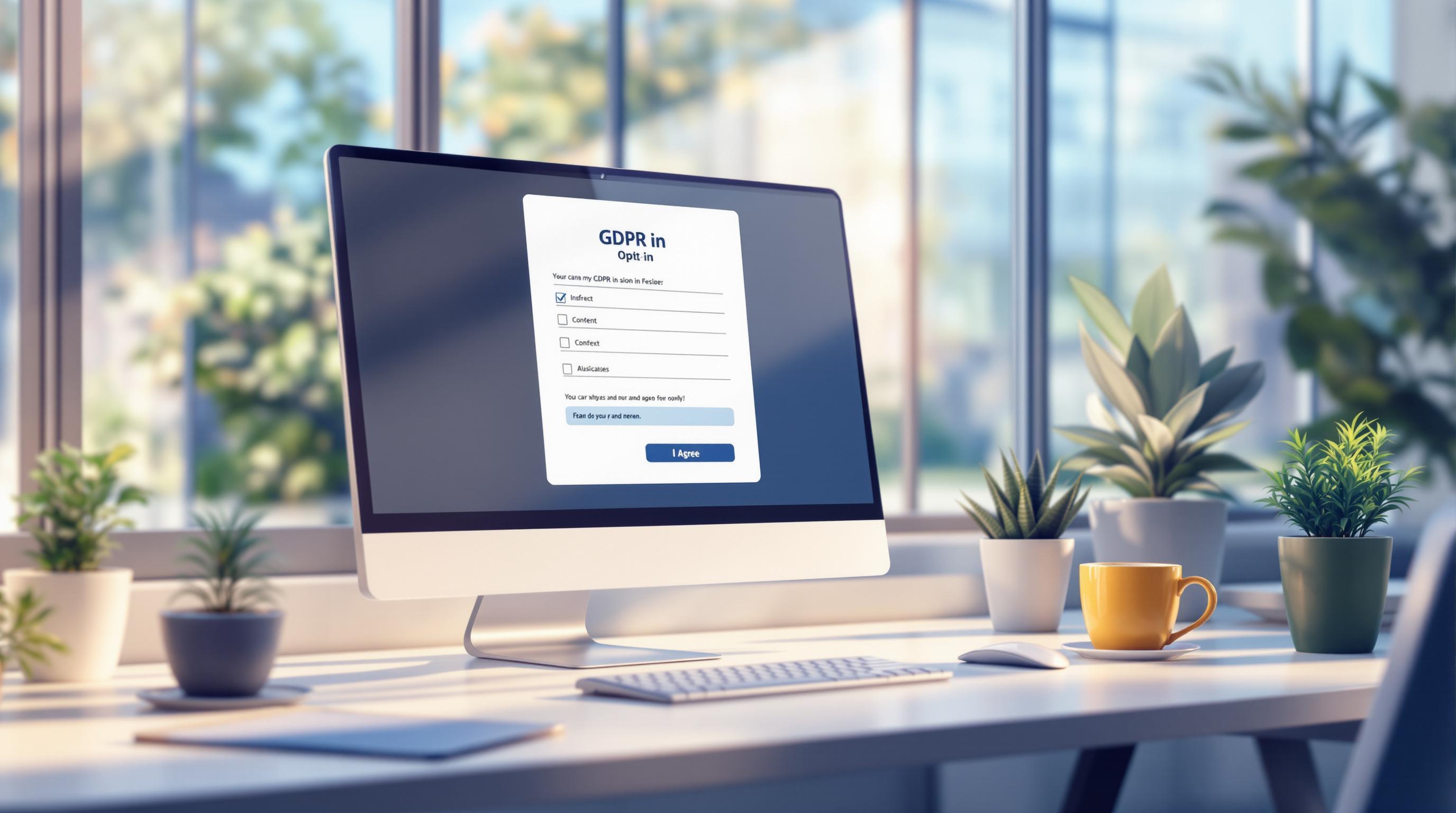Want to supercharge your lead generation? Here's how to extract emails from websites automatically:
- Use AI-powered tools like Email Extractor Tool
- Follow legal and ethical guidelines (GDPR, CAN-SPAM Act)
- Respect website terms of service
- Verify and clean extracted emails
- Implement advanced search methods for bulk extraction
Key benefits:
- Saves time compared to manual extraction
- Improves lead generation efficiency
- Increases accuracy of contact information
- Cost-effective for businesses
Remember: Always get consent before using extracted emails for marketing.
Quick Comparison of Email Extraction Tools:
| Tool | Key Feature | Monthly Cost | Best For |
|---|---|---|---|
| Hunter.io | Bulk domain search | $49 (500 searches) | Small businesses |
| Snov.io | CRM integration | $39 (1,000 credits) | Startups |
| Email Extractor Tool | AI-powered Chrome extension | $8.99 (5,000 emails) | Budget-conscious users |
| ZeroBounce | 99% accuracy rate | $18 (2,000 emails) | Data quality focus |
Choose the right tool based on your specific needs and budget.
Related video from YouTube
Tools and Methods for Email Finding
Finding emails doesn't have to be hard. With the right tools, you can speed up the process and boost your outreach. Let's look at some options that'll make email finding easier.
AI Tools for Email Finding
AI is changing how we find emails. Take the Email Extractor Tool. This Chrome extension uses AI to find and grab emails from web pages as you browse. It's like having a helper that works 24/7.
Why are AI tools so good?
- They're fast. AI can scan hundreds of pages in minutes.
- They're accurate. These tools know how to spot email patterns.
- They work on their own. You can set them up and focus on other things.
The Email Extractor Tool can handle up to 1,000,000 email IDs per month on its top plan. That's a lot of potential leads!
Tool Comparison
Let's compare some popular email finding tools:
| Tool Name | What It Does | Monthly Cost | Best For |
|---|---|---|---|
| Hunter.io | Bulk email search, domain search | $49 (500 searches) | Small businesses |
| Snov.io | Email checking, works with CRMs | $39 (1,000 credits) | Startups |
| Email Extractor Tool | AI-powered, Chrome extension | $8.99 (5,000 emails) | Budget-conscious users |
| ZeroBounce | 99% accuracy, bulk checking | $18 (2,000 emails) | Data quality focused |
Each tool has its strong points. Hunter.io is good for searching specific domains. Snov.io works well with CRMs. The Email Extractor Tool stands out for its AI and low price.
"These tools can help you find (almost) anyone's email address in minutes and connect with your target audience." - Paul Anthonioz, Content Editor at Mailmeteor
When picking a tool, think about what you need. Do you want to search in bulk? Do you need to check if emails are real? Is working with your CRM important? Your answers will help you find the right tool for you.
How to Extract Emails: Step by Step
Want to start extracting emails automatically? Here's how to do it with the Email Extractor Tool Chrome extension:
Getting Started
- Install the extension: Go to the Chrome Web Store, search for "Email Extractor Tool", and click "Add to Chrome".
- Set up your account: Click the extension icon, create an account, and pick a plan. The Starter plan ($8.99/month) lets you extract up to 5,000 email IDs monthly.
- Check out the interface: Take a quick look at the features like automation and CSV download.
Extracting Emails
Now, let's get those emails:
- Go to your target website: Open the webpage you want to extract emails from.
- Start the tool: Click the Email Extractor Tool icon in your Chrome toolbar. The AI will scan the page for email addresses.
- Look at what you found: The tool will show you a list of email addresses it found on the page.
- Dig deeper: Use the tool to crawl multiple pages on the same domain for more emails.
Managing Your Results
Got your emails? Here's what to do next:
- Save your list: Click "Download to CSV" to save your emails as a spreadsheet.
- Clean it up: Remove duplicates and verify the emails to keep your list high-quality.
- Organize your contacts: Use categories or tags in your CRM to segment your new contacts.
- Play by the rules: Remember, just because you CAN extract an email doesn't mean you SHOULD use it without permission. Follow email marketing laws and best practices.
"Email extraction tools are powerful, but use them responsibly. Always put ethical practices first in your email marketing." - Olivia Miller, Digital Marketing Strategist
Advanced Search Methods
Want to level up your email extraction? Let's explore some advanced techniques to find more emails across multiple pages and handle big searches efficiently.
Searching Multiple Pages
When you're hunting for emails from a specific company or industry, one page often isn't enough. Here's how to expand your search:
Domain-specific searches: Tools like Hunter.io let you search entire domains at once. Looking for Apple contacts? Search apple.com to get a list of all associated email addresses.
Automate with Python: Use libraries like BeautifulSoup to create a script that crawls multiple pages, extracting emails as it goes. Here's a simple example:
from bs4 import BeautifulSoup
import requests
import re
def extract_emails(url):
response = requests.get(url)
soup = BeautifulSoup(response.text, 'html.parser')
emails = re.findall(r'\b[A-Za-z0-9._%+-]+@[A-Za-z0-9.-]+\.[A-Z|a-z]{2,}\b', soup.text)
return emails
# Search multiple pages
urls = ['https://example.com', 'https://example.com/about', 'https://example.com/contact']
all_emails = []
for url in urls:
all_emails.extend(extract_emails(url))
Focus on key pages: Don't waste time on pages unlikely to have emails. Zero in on contact pages, about pages, and team pages. These are often email goldmines.
"Grab the HTML of the page and extract the emails. Get creative - search automatically for contact and about pages, grab their HTML, and extract emails from there." - Evaworld9, Reddit User
Processing Large Lists
Dealing with hundreds or thousands of websites? Here's how to handle large-scale extraction:
Bulk search tools: Many email finders offer bulk search. Hunter.io's bulk domain search can process up to 1,000 domains at once, saving you tons of time.
API integration: For massive jobs, consider using an email finder's API. This lets you integrate email extraction directly into your workflows or custom apps.
Verify as you go: When dealing with big lists, quality matters as much as quantity. Use tools with built-in email verification to avoid dead ends. The Email Extractor Tool automatically verifies collected addresses before adding them to your list.
Manage your data: With big data comes big responsibility. Have a system for organizing your findings. Use a CRM or a spreadsheet with clear categories to keep track of everything.
Remember, these advanced methods are powerful, but use them responsibly. Always respect website terms, privacy laws, and ethical guidelines. As one expert puts it:
"Email extraction tools pack a punch, but use them wisely. Always put ethics first in your email marketing." - Olivia Miller, Digital Marketing Strategist
sbb-itb-8abf799
Tips for Better Results
Let's boost your email extraction game with some pro tips. These will help you find more quality emails while playing by the rules.
Checking Email Quality
Finding emails is step one. Making sure they're real and usable? That's where the magic happens.
Use email validation tools
The Email Extractor Tool has a built-in validator. It checks emails as you go, helping you avoid bounces and keep your sender reputation intact.
Ditch role-based emails
Forget about addresses like info@company.com or support@company.com. They're spam magnets. Focus on personal email addresses instead.
Double opt-in process
Send a confirmation email when someone joins your list. It's an extra step, but it ensures you're only talking to people who want to hear from you.
Clean your list regularly
Think of your email list like a garden. It needs weeding. Every few months, remove inactive subscribers and bounced emails. Your email deliverability will thank you.
"A clean email list is the key to avoid throwing money into the spam folder." - Kickbox Team
Following Website Rules
Playing nice with websites isn't just polite - it keeps you out of trouble.
Check the robots.txt file
Before you start scraping, look at the site's robots.txt file. It tells you which parts of the site you can access. Ignoring it is like walking into a "Staff Only" area.
Space out your requests
Don't bombard a website with rapid-fire requests. The Email Extractor Tool automatically adds delays between requests. This helps you stay under the radar and avoid getting blocked.
Respect "no scraping" policies
Some websites say "no scraping" in their terms of service. Always check before you start. If it's not allowed, find another way to connect with potential leads.
Stay GDPR compliant
Dealing with EU data? You need explicit consent to use those emails for marketing. The Email Extractor Tool flags potentially sensitive data, but it's up to you to follow the rules.
Fixing Common Problems
Email extraction isn't always smooth sailing. Let's tackle two frequent issues: website access problems and incorrect email formats.
Website Access Issues
You're ready to extract emails, but suddenly you're blocked. Here's how to get around these obstacles:
Check the robots.txt file: Always look at this file before scraping. It's like a map showing which areas you can't enter. For example, TechCrunch's robots.txt file blocks access to certain directories. Following these rules can prevent many issues.
Slow down: Websites can spot and block rapid requests. The Email Extractor Tool adds delays automatically, but you can tweak this. Try waiting 5-10 seconds between page visits. This looks more like human browsing.
Rotate IP addresses: For big extraction jobs, think about using IP rotation. Services like ZenRows offer proxy pools that switch IPs automatically. This makes your requests look like they're coming from different places.
Deal with CAPTCHAs: Some sites use CAPTCHAs to stop bots. The Email Extractor Tool can't solve these puzzles, but it can tell you when it finds one. You might need to switch to manual extraction or use a service like AntiCAPTCHA.
"Browse like a human and you'll avoid blocks." - Web Scraping Expert
Wrong Email Formats
Not all extracted emails are valid. Here's how to spot and fix the wrong ones:
Use regex: The Email Extractor Tool uses regular expressions, but some tricky formats can slip through. Add an extra check with a more detailed regex pattern:
import re
email_pattern = r'\b[A-Za-z0-9._%+-]+@[A-Za-z0-9.-]+\.[A-Z|a-z]{2,}\b'
emails = re.findall(email_pattern, text)
This catches most valid email formats and filters out common mistakes.
Check domain validity: An email might look right but not be real. Use a domain verification service to check if the email's domain exists. Tools like VerifyBee can help with this.
Look for tricks: Some website owners try to fool scrapers by using formats like "user [at] domain [dot] com". Teach your extraction tool to spot and fix these formats.
Clean as you go: Don't wait to clean your list. Validate emails in real-time as you extract them. This method caught 15% more invalid emails in a Mailchimp test, making their list much better.
Remember, it's about quality, not quantity. As one expert says:
"Invalid addresses can mess up your whole email marketing campaign."
Wrap-up
Extracting emails from websites can boost your business, but you need to do it right. Here's what to keep in mind:
Pick good tools: Use Hunter.io, Snov.io, or Email Extractor Tool. They'll save you time with features like bulk searches and AI extraction.
Play by the rules: Check robots.txt files and terms of service. Don't scrape if it's not allowed. Follow GDPR rules.
Paul Anthonioz from Mailmeteor says:
"Email extractors can transform your outreach. They save time, help create targeted campaigns, and cut bounce rates. This leads to better engagement, more sales, and higher conversions."
Focus on quality: Don't just grab every email you can. Make sure they're real and relevant. Use tools to check and clean your list often.
Be smart with automation: Automation is great, but it's not magic. Keep an eye on your processes and adjust as needed.
Stay ethical: Just because you can get an email doesn't mean you should use it without asking. Always let people unsubscribe and follow data protection laws.
FAQs
How to extract email addresses from websites for free?
Want to grab email addresses from websites without spending a penny? Here's a quick way using a free Chrome extension:
- Get "My Email Extractor" for Chrome
- Go to your target website
- Click the extension icon
- Type in the website URL
- Hit "Scraper" and wait
- Download your email list as an Excel file
Sounds easy, right? But hold up - free tools often have catches. This one lets you extract emails but locks downloads behind a paywall.
If you're serious about email marketing or lead gen, you might want to shell out for a paid tool. Here's what Paul Anthonioz from Mailmeteor says:
"Email extractors can transform your outreach. They save time, help create targeted campaigns, and cut bounce rates. This leads to better engagement, more sales, and higher conversions."
But remember: use these tools responsibly. Don't trample over website terms, avoid snatching personal emails, and never spam. Keep it ethical to dodge reputation hits and legal headaches.
Need more firepower? Check out paid options like Hunter.io or Snov.io. They offer fancy features like bulk email searches and CRM integration - perfect for supercharging your lead gen.



